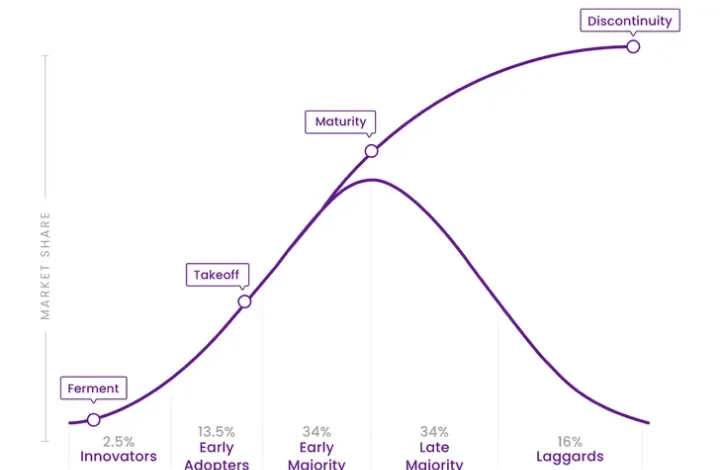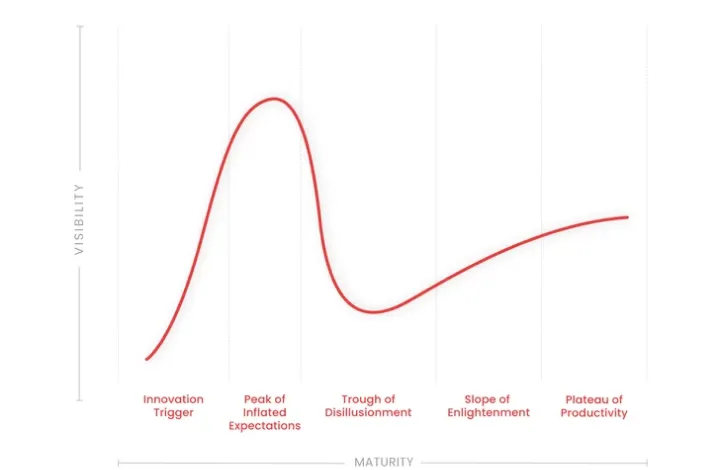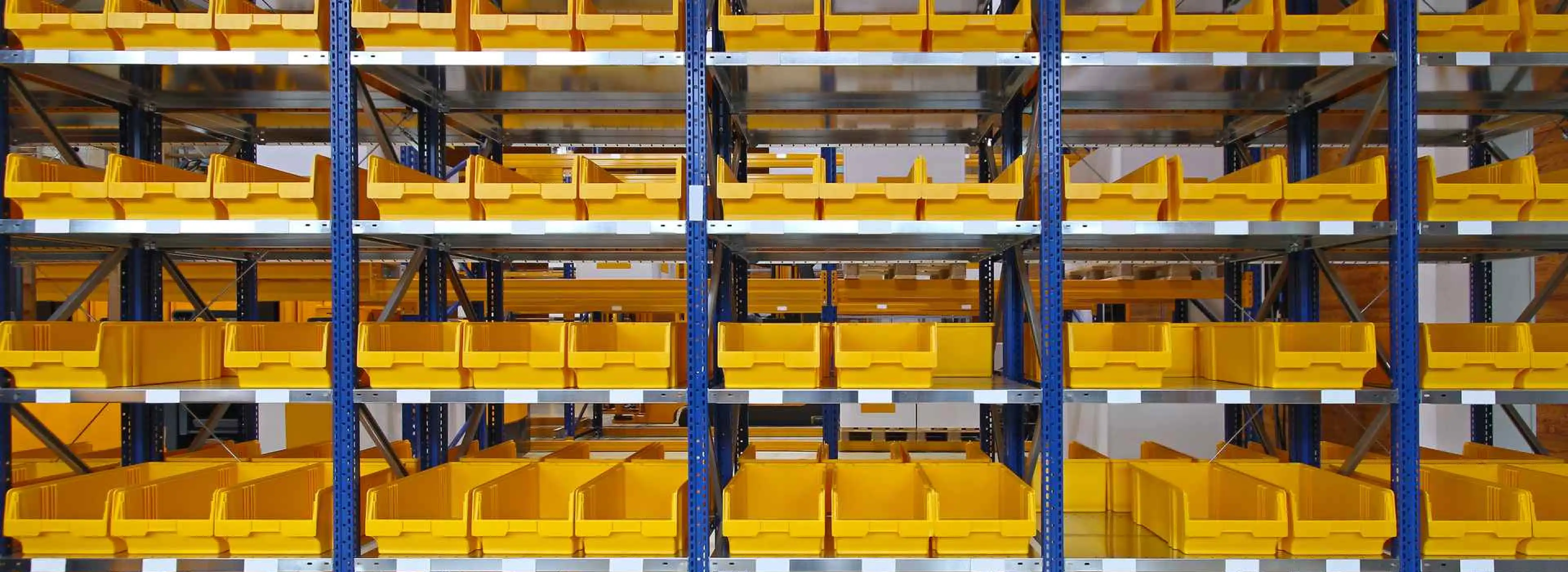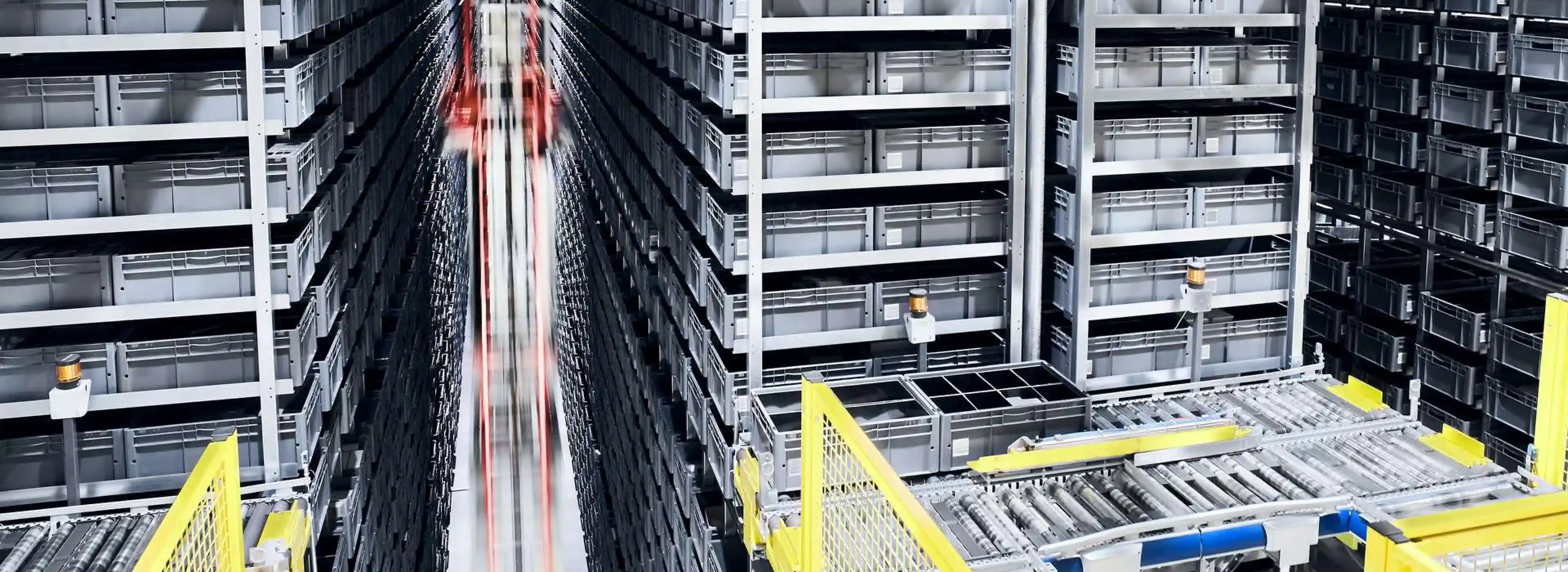As warehouse digitalization gains traction, several doubts and queries surround it. Is it the right time to adopt warehouse technology? Would it bring a value or competitive advantage to the business? Are there any risks associated with adopting this new technology? Is this technology mature enough?
Download Free Guide: 7 Technologies That Will Change the Warehouse
Fortunately, all these questions can be answered by using three simple frameworks that depict the natural evolution of technology, help us manage the risks associated with adopting new technology, and explain the pros/cons of adopting technology at different points in time. These frameworks are The S-Curve of Innovation, the Technology Adoption Life Cycle, and the Hype Cycle.
Here are these three frameworks that will guide you as to when and how to invest in technology for your warehouse.
1. The S-Curve of Innovation
The S-curve is one of the major concepts that explains the life cycle of technological innovations. Understanding the concept can enable you to determine the maturity level of a specific technology. In other words, it helps you assess whether the technology in question is new, mature, or declining.
The S-curve shows a technology’s performance in relation to the time it takes to evolve. Any technological innovation goes through four performance stages, and this curve helps decision-makers ascertain the technology’s position in the market and its viability for their organization.

| Phase Name | Characteristics | |
|---|---|---|
| Phase 1 | Ferment |
|
| Phase 2 | Takeoff |
|
| Phase 3 | Maturity |
|
| Phase 4 | Discontinuity |
|
Relevance of the S-Curve
In essence, this curve is important to discern if a warehouse technology is about to get displaced and whether it is the right time to adopt it. Here is where one needs to take a call for opportunity vs. risk.
As market trends suggest, the acquisition of more than 16% of potential markets makes success and growth very likely, and that happens in the takeoff stage.
For a warehouse considering adopting a technology, the best time is during the takeoff stage. The essence of this stage is rapid innovation and growth. This stage grants access to rapid product improvements, valuable updates/upgrades, and terrific customer service.
On the other hand, while the maturity stage may sound safer and like a good time to adopt because the innovation is at its peak, it also poses the risk that the technology will soon be obsolete (entering into the discontinuity stage). Worse off is adopting a technology about to exit for obvious reasons. The mantra is “you snooze, you lose.”
This curve affects your IT decision by informing you with the extent of risk involved and if it is too early, too late, or just the right time to embrace a technology.
2. The Technology Adoption Life Cycle
This concept, as Everett M. Rogers explains it, is based on identifying the personality traits of adopters in relation to accepting a new innovation. It is a sociological model that aptly applies to a wide range of technologies and innovations. With the help of demographic or psychological groups, it explains the adoption pattern.
There are 5 adopter groups, each exhibiting traits characteristic of the others. Roger describes this graphically with this Bell Curve.

| Category Name | Characteristics | |
|---|---|---|
| Group 1 | Innovators – 2.5% |
|
| Group 2 | Early Adopters – 13.5% |
|
| Group 3 | Early Majority – 34% |
|
| Group 4 | Late Majority – 34% |
|
| Group 5 | Laggards – 16% |
|
The chasm* of death is the transition between capturing the early adopters and the early majority.
When an innovation manages to cross this chasm, i.e. acquire more than 16% of consumers, it is believed to have succeeded. Here is where the fate of technology is decided.
Relevance of the Technology Adoption Life Cycle
For companies embracing warehouse digitalization, this cycle provides a clear view of technology adoption in relation to the time and attitude of the adopter.
So, when a company moves ahead to adopt technologies like blockchain, IoT, AGVs, UAVs, etc., it is important to ascertain before adoption where your business will stand in relation to the timeline of adoption of an innovation. This assessment will help you evaluate whether you are too late or too early and/or whether you would be able to obtain any value from the adoption of the desired warehouse technology.
Here is a representation of how the s-curve and the adoption cycle correlate.

The early adopters and early majority groups tend to reap the maximum benefit. While the risk for the former is considerable, the latter reaps the benefits with little or no risk since the innovation has already crossed the chasm of death and is least likely to fail. Undoubtedly, these are two groups that will make the most of warehouse technology by timing.
The innovators may or may not be the ones to reap benefits since the technology bears the maximum risk for this category.
3. The Hype Cycle
The Gartner Hype Cycle of Emerging Technologies is a research methodology created by Gartner, a research and advisory company. The company uses this methodology to trace the stages of the technology life cycle in relation to hype vs. reality. It represents graphically the course of maturity and adoption of an emerging technology or application. It helps find if the technology in question is relevant in a real business scenario and if there are any new opportunities to exploit.
The cycle is a descriptive (not prescriptive) view of the direction a technology or application is expected to evolve over a certain period of time. Practically, it provides insight into if you must or must not adopt a technology.

| Phase Name | Characteristics | |
|---|---|---|
| Phase 1 | Innovation Trigger |
|
| Phase 2 | Peak of Inflated Expectations |
|
| Phase 3 | Trough of Disillusionment |
|
| Phase 4 | Slope of Enlightenment |
|
| Phase 5 | Plateau of Productivity |
|
Here is the latest version from Gartner that presents the anticipated future of emerging innovations in technology, inlcuding technologies relevant to warehousing such as: IoT, Machine Learning and more.

Source: Gartner Hype Cycle for Emerging Technologies, 2019
Relevance of the Gartner Hype Cycle
Gartner’s Technology Hype Cycle is widely used by businesses to make decisions regarding technology adoption, optimize tech investments, and improve operational efficiency.
It helps them tell hype from reality, and thus make the right investment in the right technology at the right time.
The hype cycle becomes the basis for differentiating between technologies that have only tall claims and no proof, the viable ones, and the ones that may become more promising with time.
Taking this cycle as the basis, the most attractive stage is the Peak of Inflated Expectations, which is likely to allure you with all the hype that surrounds it. Paradoxically, this is not the right stage for embracing technology for the vice of the very hype that is characteristic of it.
Fortunately, the hype does go away during the Trough of Disillusionment. This stage offers itself for large-scale adoption. Since reality has been laid bare, only those producers with substance stay and add value, constantly leading to the Slope of Enlightenment when technology is standardized.
If you are between these two stages before the Plateau of Productivity is reached, the benefits will be the maximum and the best for you.
These three frameworks are the basis for analyzing when adopting a new warehouse technology. They help warehouse managers and other decision-makers make timely decisions, reduce risks, increase return on investment (ROI), and embrace the warehouse’s digital transformation. Today, when warehouses are faced with a gamut of technologies, some of which make sense and others don’t, these frameworks come in handy in educating them about when and how to invest.
If you want to learn more about Warehouse Digitalization and optimizing warehouse processes, you can follow us on LinkedIn, YouTube, X, or Facebook. If you have other inquiries or suggestions, please contact us here. We’ll be happy to hear from you.












